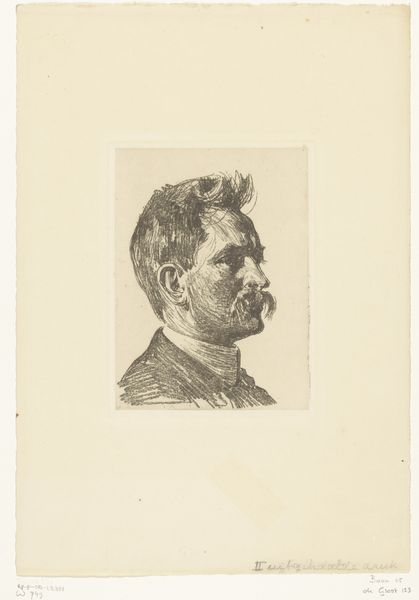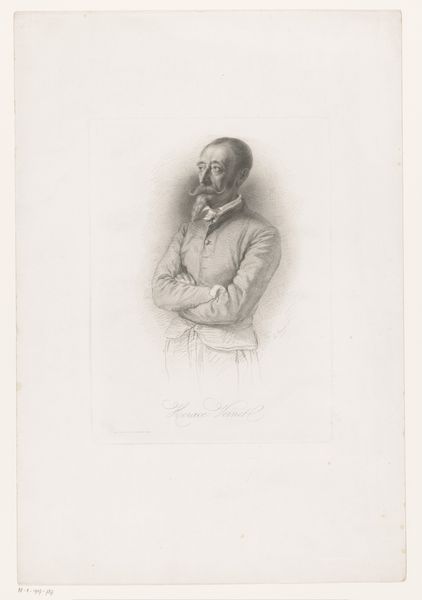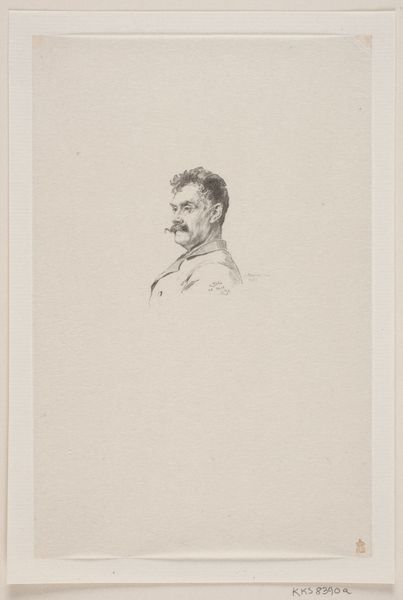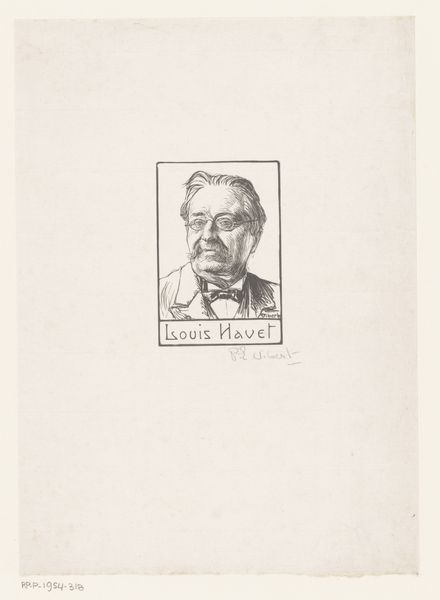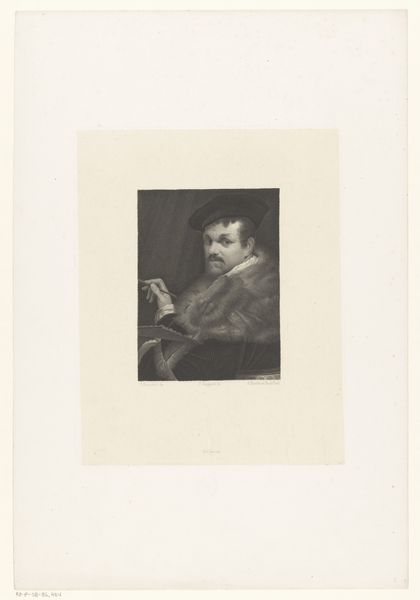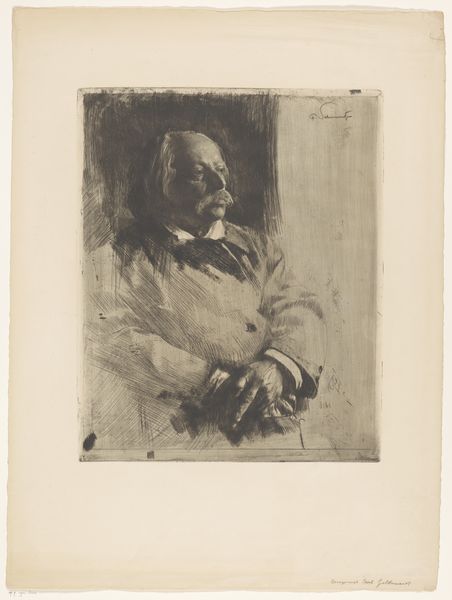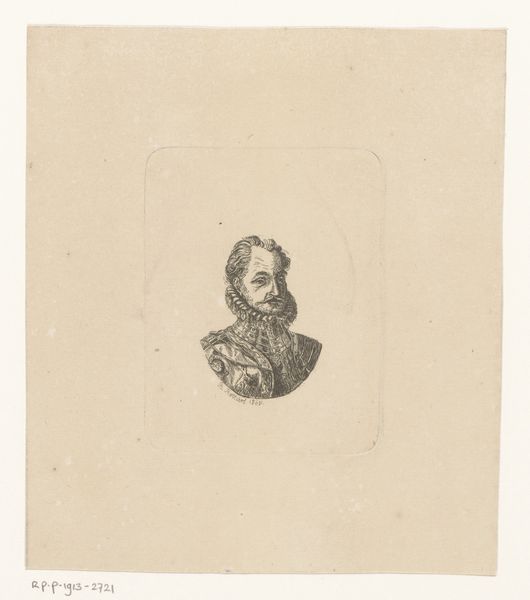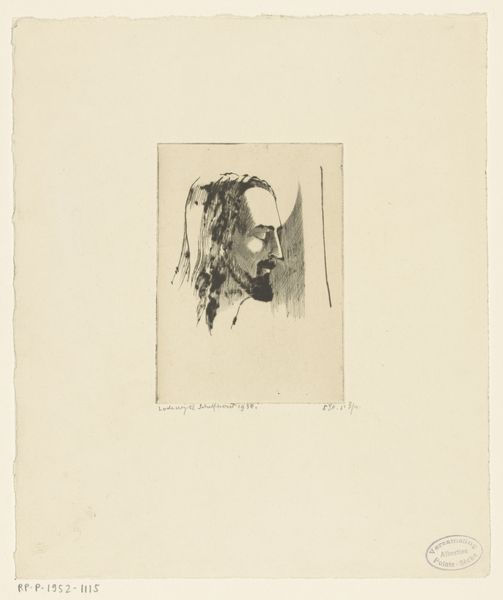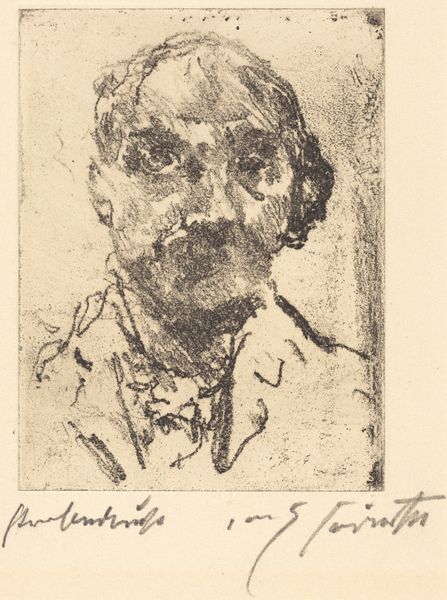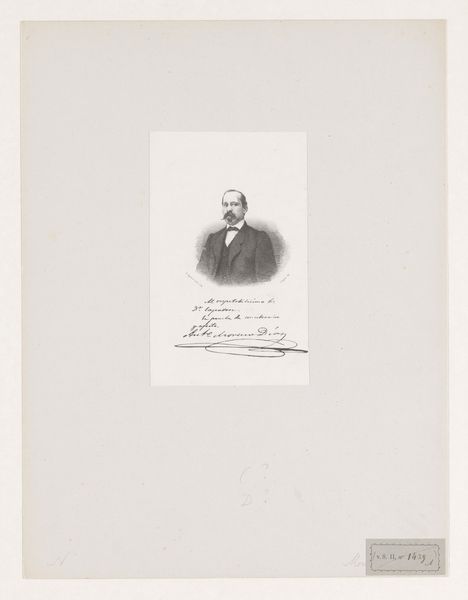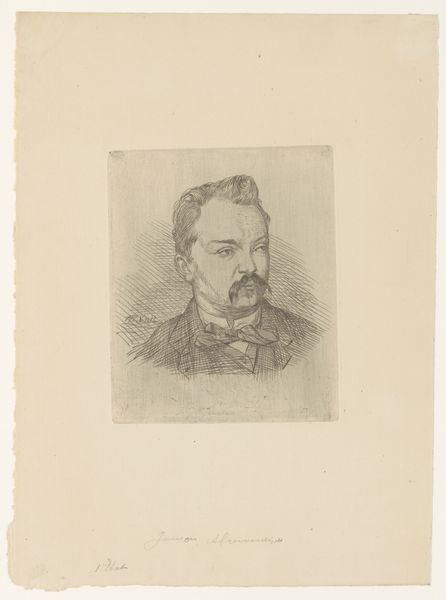
print, etching
#
portrait
# print
#
etching
#
figuration
#
realism
Dimensions: height 97 mm, width 65 mm
Copyright: Rijks Museum: Open Domain
Editor: Here we have a portrait, "Portret van een onbekende man", made in 1889, by Romain Looymans. It’s an etching, a kind of print. I find the marks feel so immediate, almost like a sketch. What do you see in it? Curator: This etching embodies the democratizing force of printmaking in the late 19th century. Consider the context: widespread industrialization enabling affordable reproductions, challenging the elite's hold on image-making. This unknown man, depicted not in oil paint for the wealthy but through reproducible means, hints at a shift in artistic and social values. Notice how the very lines of the etching, the material process, produce the image. Editor: That’s interesting, the idea of it being “reproducible.” Does that connect with the “unknown man” aspect, do you think? Curator: Precisely. The anonymity shifts the focus. We’re not invited into the sitter’s inner life, but to observe him as a product of his time, accessible to a broader audience. The artist, by choosing this medium, potentially elevates the status of everyday life, blurring the line between traditional portraiture and popular imagery. Also, it challenges the idea of the "original" artwork when considering printmaking processes. It’s less about unique artistic touch and more about accessible multiplication, right? Editor: That’s a good point. Thinking about how readily available prints were, and this portrait democratizing art… that all changes my perspective completely. Curator: Absolutely. Seeing art through the lens of material and its societal impact opens up so many possibilities. Editor: I’ll never look at an etching the same way again!
Comments
No comments
Be the first to comment and join the conversation on the ultimate creative platform.

